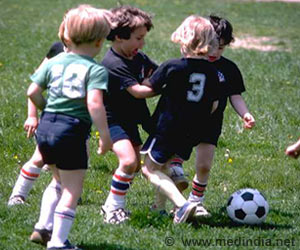
‘Parents’ income and educational levels were often associated to children’s physical activity and sedentary behavior.’
Tweet it Now
The study analysed various components of children's physical activity and sedentary behavior, and their associations with parents' income and educational level. The study included 238 girls and 248 boys, all of them 6-8 years old, whose physical activity and sedentary time were studied by using detailed questionnaires.Confounding factors ranging from age and gender to the time of year of filling out the questionnaire were controlled for in the analyses. The findings were published in the European Journal of Sport Science, and they constitute part of the Physical Activity and Nutrition in Children (PANIC) Study carried out in the University of Eastern Finland.
Low socio-economic family background reduces physical activity especially in boys
Parents' low income and low educational level were associated with lower amounts of supervised physical activity in particular. Children from families with the lowest income and educational levels were two times less likely to participate in supervised physical activity than other children. In boys, parents' low educational level was also associated with lower amounts of overall physical activity. Furthermore, boys from families with the lowest income or educational levels spent had nearly five hours more of weekly screen time than other boys.
"These significant differences in children's amount of physical activity, caused by their different socio-economic backgrounds, are a cause of concern especially among boys. Tools for increasing the amount of physical activity and reducing screen time should be made available to children coming from families with the lowest socio-economic backgrounds in particular," says Eeva Lampinen, MSc (Sport and Health Sciences), from the University of Eastern Finland.
Advertisement
The study found that 44 per cent of girls and 56 per cent of boys got the recommended amount of daily physical activity. However, nearly half of the children had more than the recommended two hours of screen time, especially on weekends.
Advertisement
Source-Eurekalert













